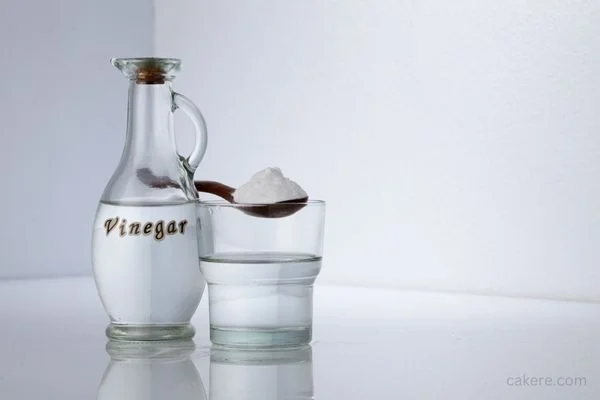Baking is an art that requires precision and attention to detail. Every ingredient used plays an essential role in the outcome of the final product. While we are all familiar with the basics of baking, like flour, sugar, and butter, some ingredients may be less commonly used.
One such ingredient is white vinegar. In this article, we’ll explore the many benefits of using white vinegar in your baking recipes.

What Does White Vinegar Do in Baking?
White vinegar is a versatile ingredient that can be used in various ways in baking. Its acidic properties can help to:
- React with baking soda: When combined with baking soda, white vinegar creates a chemical reaction that produces carbon dioxide. This reaction causes the batter or dough to rise, resulting in a fluffy and light texture.
- Tenderize meat: Adding white vinegar to marinades can help to break down tough fibers in meat, resulting in a more tender texture.
- Balance pH levels: White vinegar can balance the pH levels in baked goods, which can affect how they rise and set. By adjusting the pH, you can create a more stable environment for your baked goods to rise properly.
- Add tangy flavor: White vinegar has a tangy taste that can add a unique flavor to your baked goods, especially in savory recipes like bread and rolls.
- Help preserve freshness: The acidic properties of white vinegar can also help to extend the shelf life of baked goods by inhibiting the growth of bacteria.
How to Use White Vinegar in Baking?
White vinegar can be used in many different ways in baking, depending on the recipe. Here are some of the most common ways to use it:
- As a substitute for buttermilk: If you don’t have buttermilk on hand, you can add a tablespoon of white vinegar to a cup of milk and let it sit for a few minutes. The vinegar will curdle the milk, creating a buttermilk-like texture that can be used in recipes like pancakes and waffles.
- In baking soda reactions: When a recipe calls for baking soda, you can add white vinegar to the mixture to create a chemical reaction that will help the baked goods rise.
- In marinades: White vinegar can be used as a tenderizer in meat marinades. Combine it with oil, herbs, and spices for a flavorful and tenderizing marinade.
- In bread dough: Add a splash of white vinegar to bread dough to create a tangy flavor and to help balance the pH levels.
Frequently Asked Questions:
Yes, you can substitute apple cider vinegar for white vinegar in baking recipes. However, keep in mind that the taste and color of your baked goods may be slightly different.
The amount of white vinegar used in baking will depend on the recipe. As a general rule, a tablespoon of white vinegar is enough to react with a teaspoon of baking soda.
When used in small amounts, white vinegar can add a tangy flavor to baked goods, especially in savory recipes. However, using too much can result in an overpowering taste.
Conclusion
White vinegar is a versatile ingredient that can enhance your baked goods in many ways. Its acidic properties can help create a fluffy and light texture, tenderize meat, balance pH levels, and even add a unique flavor.
